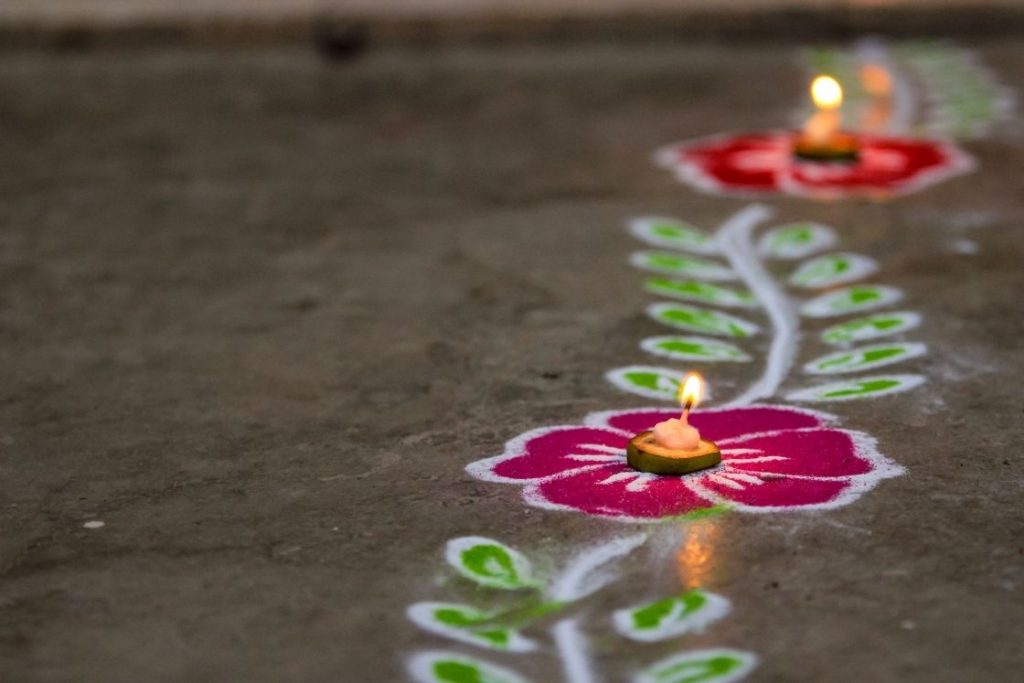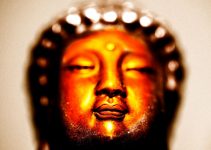
In Indian philosophy—particularly within Hindu culture Samskaras are deep mental impressions, behavioural tendencies, or subtle character traits formed by one’s life experiences. These impressions are carried from birth and shaped by repeated thoughts, emotions, and actions, often unfolding unconsciously as habits over time.
Samskaras are also believed to be influenced by past karma. The actions from our previous lives create subtle imprints that carry forward, guiding our present behaviour and patterns.
To better understand samskaras, imagine a flowing river. Just as water carves grooves into rocks over time, our thoughts and experiences carve mental grooves in the mind. The more frequently a thought or behaviour occurs, the deeper the impression becomes making it easier for the mind to repeat it.
These grooves formed by memories, emotions, and past actions are what we refer to as samskaras.
In this article, we’ll explore the meaning and significance of samskaras and take a closer look at the different types described in ancient Hindu texts
Meaning of Samskara
The Sanskrit word “samskara” is made up of two root words – “sam” meaning complete, joined together, and “kara” meaning action, cause, or doing. Thus, Samskara is a mental imprint your mind receives through past actions or thoughts you experience over a period of time.
Samskara can be associated with the yogic concept of karma and vasana. As per Sadhguru, your karma, which has been accumulated from previous lives gets carried over in the current life. The karma that is being accumulated in the current life will remain with you throughout your lifetime and will also get carried over in your next reincarnation.
This residual karma is often referred to as vasana (means desire). The vasana gets manifested into the tendencies that determine the people you meet and the experiences you gain from the interaction and finally the life you lead.
Karma and vasana combine to form samskara. Because of past lives’ behaviors, you are born into a specific samskara. However, your current karma decides how much joy or pain you experience.
Scientifically speaking, it is our reaction to the stimuli, be it conscious or unconscious. Something as simple as a sensation can be the starting point of building these patterns in our brain. Patterns are used by our brains to help us remember what we’ve learned.
When we think or do something over and over again, it creates a channel in our brain. For daily functioning, our neural tissue forms to make these pathways faster and more efficient.
When ideas and acts leave an impact on the mind, it is called a samskara.
Samskaras as per ancient texts
Throughout ancient Sanskrit scriptures, rites of passage of a person’s life are also referred to as Samskara. In ancient Sanskrit and Pali writings of India, Samskaras translates as “putting together, making complete, getting ready, to prepare,” or “a sacred or sanctifying ceremony.”
Moreover, in several schools of Hindu philosophy and the Yoga school, samskaras are tendencies, characters, or behavioral traits that exist as default from conception or that are developed and refined by a person over their lifetime and that persist as impressions on the subconscious.
The nature, response, and states of mind of a person are influenced by these refined or inherent traces of karma within that individual.
Patanjali’s Yoga Sutra discuss the importance of Samskaras in sutra 3.18:
Samskara saksat karanat purvajati jnanam
Meaning – By the realization of latent impression, knowledge of previous births is acquired.
Samskaras are also mentioned in the Upanishads as a way to develop and thrive in all four elements of human pursuit: Dharma (righteousness), Artha (wealth), Karma and Kama (labor and pleasure), and Moksha (liberation or salvation).
In Vedas, one of the world’s oldest known writings, various parts of samskaras and rituals of life’s passage are mentioned. The multiple Dharmasutras and Grihasutras contain the most thorough, but varied, analyses of these rites of passage. Within the Grihasutras, there are a varied number of samskaras mentioned, as stated by many sages. Some say that there are 40 samskaras whereas others believe that the number is 11.
16 Samskaras in hinduism

In Hinduism, Samskaras are sacred rituals or rites of passage that mark important stages in a person’s life. After studying various scriptures and commentaries, scholars have agreed upon sixteen key samskaras, known as the Shodasha Samskaras (Shodasha means “sixteen” in Sanskrit).
These samskaras serve to purify the mind and body, uphold dharma (righteous living), and guide a person through the journey of life from conception to death.
Pre-natal Samskaras
1. Garbhadan (Conception) – It’s also known as Garbhalambhanam, which means “wealth of the womb.” It is a pre-conception ritual that ensures the birth of healthy offspring. In Hinduism, children are thought to be important for repaying obligations owed to the ancestors.
2. Pumsavana (Engendering a male issue) – When the pregnancy begins to show in the third or fourth month, Pumsavana is performed. Pumsavana means “strong or male baby rite,” which is commonly interpreted as “nurturing a male fetus, bringing forth a male infant.” The ritual commemorates the growing fetus’s rite of passage, celebrating the time when the baby starts to kick as a developmental milestone.
3. Simantonayana (Hair-parting) – The spouse does this by parting his wife’s hair. This samskara’s meaning is to bring good fortune to the mother and longevity to the unborn child. It also protects against negative forces and avoids premature abortion. The ceremony is to pray for the baby’s health and wellbeing and the mother’s safe childbirth.
This ritual is the modern-day godh bharai or baby shower ceremony. The woman is supposed not to overexert herself after the Simantonayana rite or during the later months of her pregnancy, and her husband is required to be by her side and not to travel to far regions.
Childhood Samskaras
4. Jatakarma (Birth rituals) – It is a rite of passage commemorating the birth of a child. It denotes the birth of the child including the father’s connection with the child. In the Jatakarman rite, the father welcomes the infant by touching his lips with honey and ghee while reciting Vedic hymns.
The hymns’ primary purpose is to introduce the baby’s mind and intellect to the world once the baby’s physical formation is complete in the mother’s womb. The hymns’ second portion wishes the baby a long life.
5. Namakarana (Name-giving) – In this rite, the infant is named on a day determined by caste customs based on the constellations at birth. It is normally performed on the eleventh or twelfth day after birth, and occasionally on the first new moon or full moon after the tenth day. The infant is bathed and dressed in fresh clothes on the day of this Samskara. Their official name is revealed, which was chosen by the parents.
6. Nishkrama (First outing) – Nishkrama translates to “getting out, forth.” When the parents take the infant outside for the first time in the fourth month, the newborn fully meets the new world. The newborn is taken out and shown the sun at sunrise or sunset, or the moon, or both, on this special occasion.
Some families, on the other hand, take their newborns to a temple for the first time. The mother and father, any siblings, as well as other close loved ones such as grandparents and friends, accompany the infant on this outing.
7. Annaprashana (First feeding) – The first time a baby eats solid food, usually cooked rice, is called Annaprashana. The goal of this Samskara is to focus on the child’s physical and mental development. The meaning of Anna-Prashan is that the infant was previously only sustained by his mother’s milk, so now the child should be introduced to some food.
This rite is normally performed around the sixth month of a child’s life, or when the child’s first teeth appear. The mother consumes the same food as the infant. The father joins them in the rite of passage and sits with them.
8. Chudakarma or Chaul (Shaving of head) – The relevance of this rite of passage, also known as Mundan Sanskar, is the baby’s first step toward hygiene and cleanliness. The rite is regarded as a purification ritual. It is usually done around the time of the child’s first birthday. For longevity, a tuft of hair (shikha, chotli) is left in place at the crown of the head. The mother dresses up, often in her wedding sari, and the baby’s hair and nails are clipped with the father present.
9. Karnavedh (Piercing the earlobes) – Karnavedh means “ear-piercing,” and children’s ears must be pierced for protection against diseases like hydrocoele and hernia, or even for decoration. The right earlobe of a male is pierced first, while the left earlobe of a girl is pierced first.
This optional practice serves largely as body adornment and is an important element of the baby’s socialization and cultural immersion. A clean gold thread or silver needle is used to pierce the skin. The majority of Grihasutras do not address this small rite of passage.
Educational Samskaras
10. Vidyarambha (Learning the alphabet) – The goal of Vidyarambha Samskaras, which means “beginning of the study,” is to introduce a kid to the importance of education. It is a ceremony that honors the child’s initial approach to study methods of knowledge as a milestone. It is commonly conducted at the age of five.
On the day of Vijayadasami, which falls in September–October, all children in their fifth year participate in the event. It begins with a prayer to the goddess Saraswati and the deity Ganesh, followed by a teacher or the parents working with the kid to write letters of the alphabet, draw numbers or drawings, and occasionally play with an instrument.
11. Upanayana (Sacred thread initiation) – The acharya initiates the son with the sacred thread, known as janoi, at the age of eight. This samskara is considered the most important of all the preceding samskaras. The child’s practical and spiritual progress is established through this Samskara. It’s a ritual in which a Guru (teacher) welcomes and guides a kid toward enlightenment, so initiating the second birth of the young mind and spirit.
12. Vedarambha (Beginning Vedic study) – Vedarambha is a rite of passage that marks the beginning of schooling in the Vedas and Upanishads. Upanayana samskara was the start of education, but this samskara was meant to begin Vedic study. Each learner masters his or her branch of the Vedas in this Samskara, according to his or her ancestry. Before beginning Veda studies, the student learned vocabulary, grammar, and other fundamental disciplines. The Veda study officially began with Vedarambha.
13. Keshant (Godaan) (Shaving the beard) – Hair is referred to as ‘Kesh,’ and ‘ant’ means end. This samskara entails the learner shaving his beard for the first time at the age of sixteen. It’s also known as Godaan since it entails giving the acharya a cow and a present to the barber. Since the pupil has reached manhood, he must be more aware of his youthful urges. The student recites his chastity pledge and the Brahmacharya code at the end of the coming of age ritual.
After the first menstruation, Ritusuddhi, also known as Ritu Kala Samskara, is the related coming-of-age rite for girls. This significant event in a girl’s life is marked by presents and the donning of a sari by her family and friends.
14. Samavartan (End of studentship) – ‘Returning home from the acharya’s house’ was referred to as Samavartan. Awabhruth Snan, a ritual sacrifice bath, is performed in this ritual. It is sacrificial because it signifies the conclusion of the long commitment to brahmacharya. After completing at least 12 years of school, the ceremony took place around the age of 21 or later.
Marriage Samskara
15. Vivaha (Marriage Ceremony) – The most essential of all Hindu Samskaras is Vivaha samskara. The most thorough personal ritual that an adult Hindu undergoes in his or her life is Vivaha (wedding). Wedding rites and ceremonies commence with a couple’s engagement and continue after the wedding is over. The Vivaha samskara is a Vedic yajna rite that includes the chanting of Vedic hymns. In the presence of family and friends, the Vedic fire-deity Agni (or the Sacred Fire) is the main witness of a Hindu marriage.
Grihapravesa — where the groom’s mother, father, brother(s), sister(s), and other relatives welcome the bride to her new house – is one of the post-wedding customs. Chaturthikarma which means, “the rite done on the fourth day after the wedding”, is the rite in which the new couple’s first domestic fire is lighted, signalling the start of their food-related householder existence.
This samskara promotes dharma and cultural values. It defends and encourages moral uprightness and self-control.
Death Samskara
16. Antyeshti (Death rites) – In a Hindu’s life, Antyeshti is the final Samskara. It is significant because the value of the future world exceeds that of the current one. With the assistance of Brahmin priests, the last rituals are carried out with great care.
A dead Hindu adult is cremated, whereas a dead Hindu child is usually buried. The rite of passage is carried out following the sacred belief that the microcosm of all living beings is a perfect representation of the universe. The essence and immortal soul (Atman) is freed during the Antyeshti rite. The body is returned to the five elements and origins of air, water, fire, earth, and space in the final rite of passage.
How does Samskara work?
When a Vritti (thought wave) emerges in the mind, a samskara is born. After leaving the conscious mind, this thought wave descends into the Chitta (subconscious or unconscious mind) where it stays in the form of a samskara.
When the mind is encountering something, a Samskara of that event is produced or generated in the Chitta. There is no time lag between the present experience and the subconscious mind’s creation of a Samskara.
Memory or smriti is what happens when the Samskaras rise as a result of an old vritti surfacing upwards of the conscious mind as a large wave through recall.
As a result, samskaras also function as memory banks, storing every detail of one’s past experiences. In stages of remembering, samskaras return to the threshold of the conscious mind as memories are retrieved.
We undertake activities as long as we are alive, yet not all of them serve as a source of samskaras. The actions that we execute with complete awareness leave the greatest impact on our minds.
To put it differently, the motive behind an action is what gives it significance. Repeating samskaras strengthens them and creates a difficult-to-break groove. The impression keeps growing with each repetition of the deed.
According to the ancient scholar Panini, Samskaras are the treasures that enhance one’s persona. They prepare the road for an individual’s physical and spiritual journey through life. The many Hindu samskaras are said to carefully lead to the purifying of one’s sins, vices, and flaws, as well as the cure of physical defects laying the groundwork for the creation of virtues.
Samskaras can also be perceived as a psychological and religious remedy that aims to eliminate flaws and implant positive thoughts and beliefs.
Samskaras have a residual power that can greatly impact a person’s future, in addition to giving a reminder of the past. They hold buried aspirations and unconscious thoughts that are ready to be manifested, and they can be powerful enough to influence thought patterns in certain situations.
How to break negative samskaras?

Throughout our lives, we perform a variety of good, bad, right, and wrong acts. As a result of these actions, our minds create both good and bad samskaras, and it is up to us to strengthen or eradicate a specific group of them.
When we choose to engage in unpleasant behavior, whether it’s being judgmental, thinking or saying cruel things to yourself or others, or simply acting impolite, we develop negative samskaras. Anger, loneliness, jealousy, and anxiety are all bad emotions caused by negative samskaras.
The more you utilize these acts deliberately, the more often your mind will instinctively respond to them. As a result, negativity will soon take control of your personality, showing so frequently that you probably won’t notice it.
The best thing about samskaras is that they allow us to break out from this cycle. Yoga and meditation can help us build healthy mental patterns, which can be extremely beneficial in the fight against negative samskaras.
Dharana and dhyana are yogic techniques that are thought to help practitioners to face samskaras below the boundary of consciousness, permitting negative effects to be addressed and changed with positive ones.
Below are some of the ways through which you can break away these negative samskaras to imbibe and strengthen the positive ones.
1. Intention or Sankalpa
Developing an intention necessitates thought, prayer, meditation, and dedication. A solemn commitment made in the heart or mind is known as Sankalpa.
Before we can make a change, we must first realize that we need to make one. Consider a bad habit you’d like to get rid of. There’s no need to feel guilty or ashamed about acknowledging this. Simply admit that this has been your life and that you will be making a positive decision to change it.
2. Discipline or Tapas
Tapas is a form of self-control, intensity, and devotion that is maintained throughout time. Regular pranayama and yoga stretch practice are one of the most effective strategies to establish and maintain tapas.
A daily spiritual and self-care practice should be a part of your life change to help you stay on track. Any time we can stop repeating a negative samskara by retaining a concentrated force inside ourselves. This energy feeds the awareness flame, pushing our inner wisdom to the surface. However, intensity can be a sort of negative samskara, therefore tapas should always be used with caution.
3. Slowness or Shani
Because samskaras are spontaneous and instinctual, they frequently occur as a reflex, often without our knowledge. Slowing down teaches us how to respond rather than react. Eventually, our behaviors and attitudes become more intuitive and attentive. We can truly take time before the trigger causes our negative response when we slow down. This enables for more in-depth reflection, allowing us to determine whether our behaviors are motivated by old samskaras.
4. Awareness or Vidya
After you’ve slowed down, you might genuinely take time to become very conscious of what’s triggering you, as well as why it’s provoking you. Start paying attention to what is going on right presently. Vidya teaches us to recognize our samskara (thoughts, behaviors, and motions).
It’s also critical to be conscious of our true accountabilities. When we have a negative reaction to a scenario, we frequently blame others. A victim mentality is often a harmful samskara in itself.
5. Fearlessness or Abhaya
We frequently reach a point where we are ready to change but are held back by (often hidden) fear. Abhaya assists us in confronting the unknown. We begin to understand unpleasant feelings like grief, wrath, criticism, or embarrassment, allowing them to pass without reverting to previous samskaras for solace. Our natural inclination is to avoid unpleasant emotions. But we must be brave and let these horrible sentiments wash away from us.
6. Vision or Darshana
Consider what life would become if you didn’t have that old way of doing or thinking. The brain is stimulated by meditating on and imagining your life without the intrusion of your samskaras. We develop mental freedom by producing space in the mind during yoga; this mental freedom can inspire our creativity, allowing us to find an infinite number of better patterns.
We must eventually develop a new samskara after we’ve studied the origins of our patterns. And that’s what will ultimately direct our actions and lead us to our eventual destination.
7. Practice or Abhyasa
This can include your yoga asana, pranayama, meditation, and, most importantly, the development of new habits. Returning to the list of seven steps, reassessing what is working and what needs to be improved, and remaining consistent with our new, more positive behaviors.
Abhyasa aids in the strengthening of our new samskara over the old; the more we strengthen the new groove, the more potent it gets. Understanding what causes a relapse and recommitting to our practice helps us avoid relapsing.
Conclusion
Your ultimate potential can be realized if you begin to comprehend all of the aspects in which your samskaras affect you from a point of inquiry and compassion. Yoga’s purpose is to get us closer to our genuine nature by improving our samskara. You may change your karma, build new patterns, and over time, change your samskara into a positive life if you have the patience and commitment to put in the effort.




